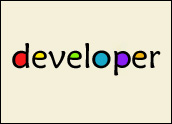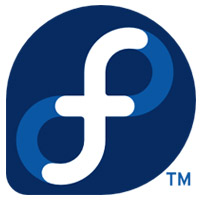
OpenGammais the developer of the first open source analytics and risk management platform for the financial services industry. Its products help companies explore flexible open source alternatives to conventional and costly risk analytics tools.
The OpenGamma Platform is a unified system for front office and risk calculations for financial services firms. It combines data management, a declarative calculation engine, and analytics in a single comprehensive solution.
Its development is the brainchild of Kirk Wylie, who got his start with his first venture capital-funded open source business at the age of 23 in Silicon Valley. It was a complete failure, but it taught him much about the software industry.

After moving to London nine years ago, Wylie started working in finance. His experiences in that industry allowed him to fuse the two halves of his career when he founded OpenGamma in 2009. The first half was expertise in pure technology open source startups. The second half, which is domain-heavy, is the hardest area of finance, according to Wylie. Most of its customers are hedge funds and investment banks.
“We do front office analytics and trading systems for people who trade in derivatives,” Wylie told LinuxInsider. “We don’t handle anything that a retail investor would be allowed to go near. But that being said, our technology touches pretty much everyone that has an interest in capital markets. Anyone who deals with nonlinear financial instruments has the potential to use and benefit from our software.”
In this interview, LinuxInsider discusses with Wylie, CEO of OpenGamma, how open source software is cashing in on managing the money systems that pay for the financial investments businesses, and what is its Achilles heel.
LinuxInsider: How heavily rooted in open source is OpenGamma’s software stack?
Kirk Wylie: When we started out in 2009, one of the core strategic decisions that we made is that we have to be properly open sourced. We made a very big commitment that you would never be forced to write anyone a software check to use OpenGamma. Our standard reference database is PostgreSQL. Our referenced middleware is Apache ActiveMQ. We run OpenJDK. And all of our libraries are all open source. We don’t use a single commercial library anywhere is the core open source offering. That is so that we would have the comfort of knowing that when you are downloading the Apache-licensed version of OpenGamma, you have our word that you will not have to write anyone a license check to use it.
LI: In terms of your customers, does anyone really care that your open source stack is pure pedigree? Would your clients seek you out anyway?
Wylie: The open source part is an absolutely critical part of our business. We would not be where we are today and we would not have the prospects we have if we were not open source. I’ll be honest. We do service a certain part of the industry that does not care about open source. To them, open source or closed source, all that matters is that we are producing superior numbers for them to drive their business. So that segment of our customers will use the exact same version of the software as the other customers.
LI: Do people care that they do not have to write that check to Microsoft or Oracle or any other commercial software firm?
Wylie: I don’t know. Yes and no. For anything else, there is not a good enough reason for us not to have open source. But the fact that we are open source is critical to most of our customers. The fact that it is absolutely transparent, that they can inspect the code if they want to, that they can pack up and move to self support is the ultimate alignment of our customers’ interest in our business model. And what they really care about more than anything else is that our business model must remain in radical alignment with theirs.
LI: In this market stratum that you are describing, how prevalent is the use of open source? Are there only a few competitors, or is it expected that the software providers be open source?
Wylie: If you take a look at the software being developed inside financial institutions, there is open source everywhere. The standard product stack these days internally is that a lot of times you actually have people using a product like a low-level infrastructure like ActiveMQ, PostgreSQL, or a little bit of MySQL, which is not as common in finance. In finance it is really a Java-heavy environment. In our environment it is open source all over the place. It’s like spring is everywhere.
LI: Can you describe how much of a clear or crowded field you saw as you made your vision for OpenGamma a reality in the finance world?
Wylie: As a concrete example, I was at Morgan Stanley for six months while we were getting OpenGamma going. Morgan Stanley had spent an enormous amount of time and effort building a custom web services stack. They built from scratch their own infrastructure with libraries and server containers. It was everything. While I was there, they were doing a complete transition to Apache CXF. And the simple answer was that open source had the ability to come it and kick aside every single box they built. Open source has the ability to customize and work around everything they needed without their having to build from scratch. So there is really a proven reference for open source in a big part of this industry. Where OpenGamma is coming in is that we are the first or second time that someone has tried to do financial services that is specific to open source natively.
LI: What happened to the initial attempts that you just mentioned?
Wylie: There have been a couple of other examples. For instance, Quantlib is a long-standing native library that is open source. [*Correction – Feb. 26, 2013] There was a company that got started called Marketcetera that I think was executed badly and chose some wrong parts of the market. I think that we are the first company to come into this market and say, “I am going to do a very big chunk of this market that is considerably finance-specific and has no relevance to the broader side of the software engineering community, and I’m going to do that with open source software.”
LI: How prevalent are customers’ concerns over software security issues?
Wylie: I was at an open source day for a European bank that I can not name. Red Hat organized it, and I was one of the non-Red Hat people that they brought in to talk about open source in this security area. We did actually get a question towards the end about how you guarantee security. That is not the type of question you would normally get in a pure technology organization in Silicon Valley. But I think that some traditional vendors are still slinging some FUD (fear, uncertainty and doubt) here and there. Also, I think some people in the open source community confuse and scare the very people in the marketplace that they want to attract to open source.
LI: What questions are typical from those unfamiliar with open source software standards?
Some of the questions we get could be related to security issues. For instance, how do you guarantee that somebody is not going to put bad code into the system? This is a legitimate question. The simple answer is that you get it from us, and we know where all the code came from. Or how do you know that if I code against your stuff my code has to be released? So they are worried about the virility without necessary knowing the meaning of that word when it comes to the software license. There definitely are some areas where there is still some education required in certain types of sales meetings.
LI: What does the open source community have to do to further push along better understanding of non-believers in the financial market place?
Wylie: We do run into non-believers out there. That could be the result of our being a self-selected native system. So the type of people that are attracted to us at our current price line are probably pro-open source. My experience with the financial industries as a whole is that there are two types of people in the financial services, broadly speaking, when it comes to open source. The first is the open source enthusiasts. They are developers. They are confident. They know what they are doing, and they want open source wherever they can. I don’t think we need any real evangelism to that segment.
The second area is people that maybe do not really care. With them this has not been a problem. I think that part of it is explaining the problems to them in a way that resonates to a financial services audience, which is different than a normal consumer. The end users in financial services are very seldom the actual buyers of technology. It is the technology departments that are buying the technology. The types of things that resonate with them, I found, even in cases where they honestly do not care about seeing the source code, is vendor control.
LI: How have you handled making converts to that segment?
Wylie: That is why we talk about the customer-vendor relationship. Every single customer has ended up buying something from the wrong company and being stuck with it. These are really long decisions they are making that last 10 to 20 years. So what happens if your vendor goes out of business a couple of years down the road? Or what happens if your vendor all of a sudden jacks up your prices? This is not a case where you can buy a new laptop, and it has a new operating system and job done. You may have spent $20 million on the total solution cost. Those are the types of issues that we found really resonate.
LI: Are you happy with the level of maturity reflected in today’s open source market?
Wylie: One of the things that we run into, because we are both producers and consumers of open source technology, is how the industry as a whole handles the needs of commons. In other words, there are a large number of projects that are critical to technologists and to the people that have the ability to monetize an end-user relationship, but are not individually sufficient to monetize. So what do we do about projects that everybody cares about, but that project alone could not really monetize to keep the development going? I think that is the interesting thing because where you get funded and profitable companies behind things, you start to increase the maturity level that makes things easier. You know, things like making the documentation better. You have more people that are available and answer help requests and keep things up to date with the state of the art.
LI: How does that scenario impact on OpenGamma in the real world?
Wylie: At OpenGamma we are able to monetize what we are doing, and get people to write us sufficient annual checks per year that allow us to be able to invest in the technology we are investing in. But we rely on hundreds of other open source projects. If you do a full download of our system, the number of third-party dependencies is very large. Not all of those necessarily have the ability to monetize. We might be paying them. That is a legitimate thing. That is one thing that commercial software has consistently succeeded in. The fact that you do not have the source code, so you have to invest in the documentation and the training. So I think that is where I would start to target things.
LI: Do you envision a time when you would add some proprietary offerings to attract a larger clientele or perhaps expand into the cloud?
Wylie: OpenGamma is an on-premise software product. All customers or users run their own copy of it on their own computers. I am in an industry that does not yet buy all the hoopla over cloud storage. Over the course of the next few years, OpenGamma plans to offer a cloud-based product. One of the reasons is to provide a service for potential customers that do not really care about open source or inspecting the actual code that is running, but still like the idea that they can. This product will be the same software that our customers download to run locally. But it would also include some data feed stuff that we would need. We probably would not be able to open source the cloud portion because it would contain some other peoples’ proprietary knowledge.
*ECT News Network editor’s note – Feb. 26, 2013: Our original published version of this article incorrectly quoted Kirk Wylie as saying “Quantlet” is “a long-standing native library that is open source.” What Wylie actually said was “Quantlib.” We regret the error.





















































